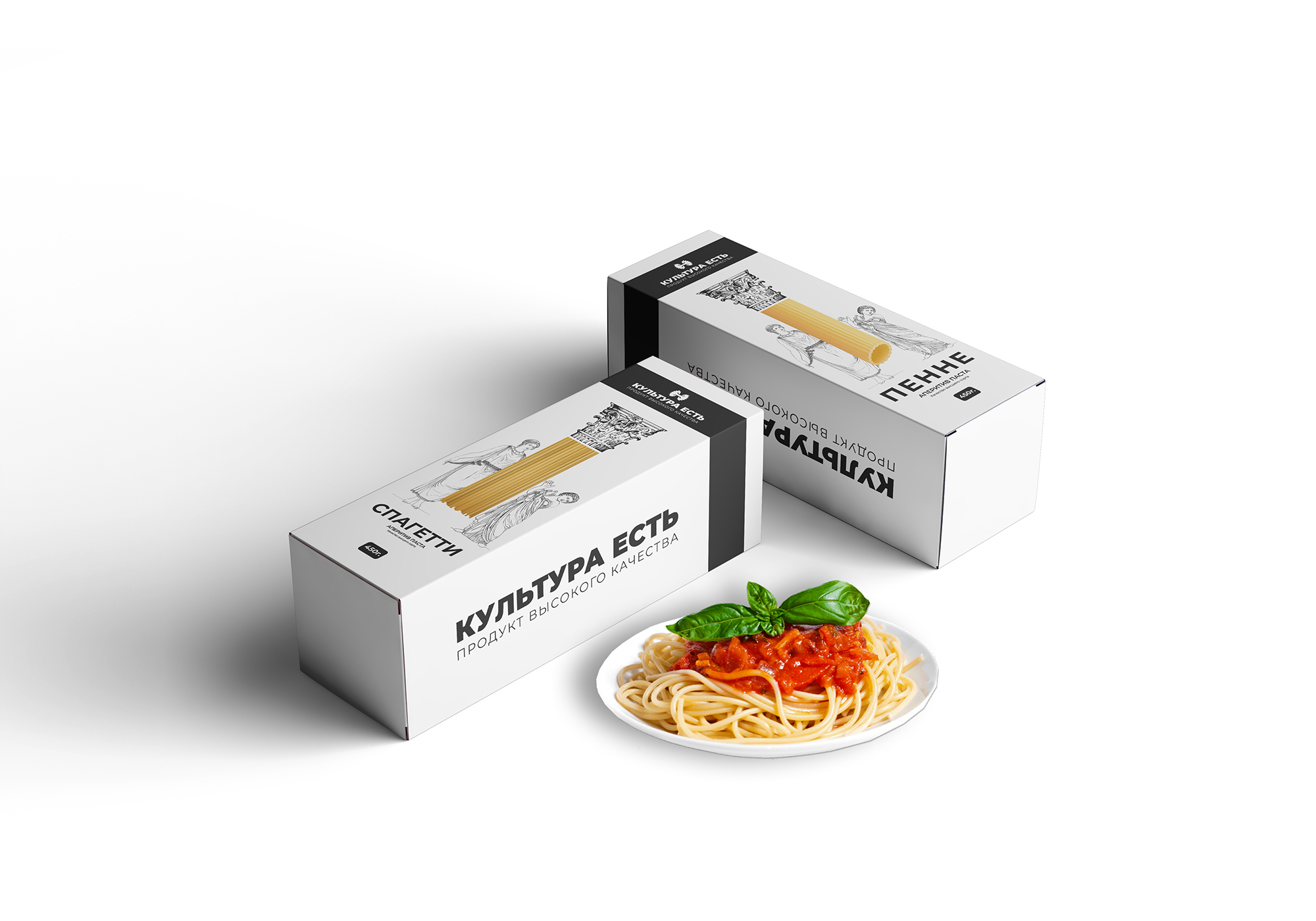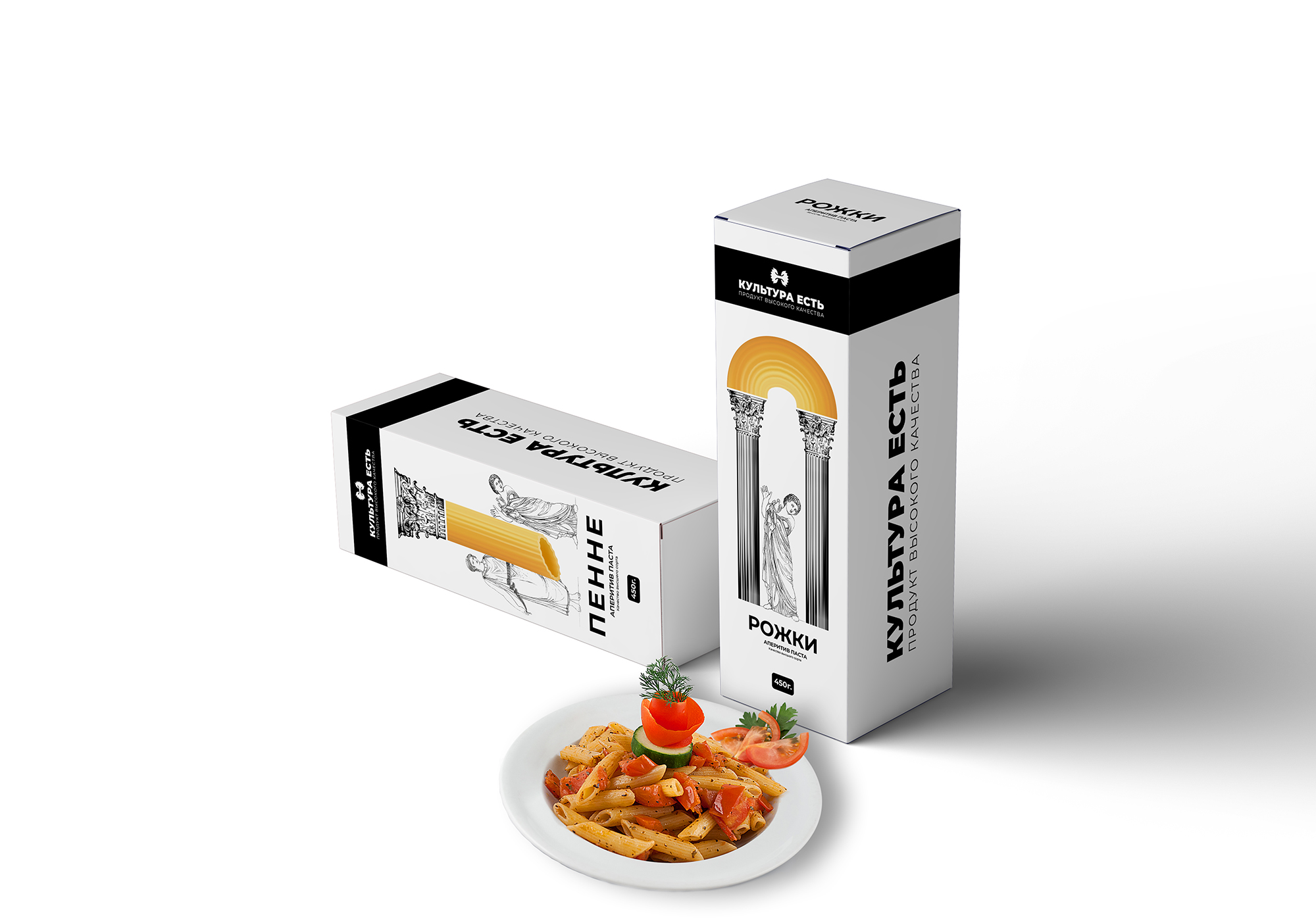Hello art-loving people. We were very excited by this interesting packaging design. At first, we thought that it would be very difficult to create any creative design with the given brand name. Because the name was not very relevant to the brand’s activities in our opinion. But what are we designers if not to be creative? to find a solution in any of our work. They tried to connect it with the name, because the name imposed something cultural on us. Here we had to go to very distant origins. Since pasta is closely related to Italy, we decided that we should connect it with the ancestors of Italians, the Romans And so we made illustrations of ancient Roman figures, Roman columns and merged with pasta. We presented the different types of pasta in a rather interesting way on the box. Our assortment is three in number. Those assortments are typical Italian and you can learn about the history of pasta.
Pastas are divided into two broad categories: dried (pasta secca) and fresh (pasta fresca). Most dried pasta is produced commercially via an extrusion process, although it can be produced at home. Fresh pasta is traditionally produced by hand, sometimes with the aid of simple machines. Fresh pastas available in grocery stores are produced commercially by large-scale machines.
Both dried and fresh pastas come in a number of shapes and varieties, with 310 specific forms known by over 1,300 documented names.In Italy, the names of specific pasta shapes or types often vary by locale. For example, the pasta form cavatelli is known by 28 different names depending upon the town and region. Common forms of pasta include long and short shapes, tubes, flat shapes or sheets, miniature shapes for soup, those meant to be filled or stuffed, and specialty or decorative shapes.
As a category in Italian cuisine, both fresh and dried pastas are classically used in one of three kinds of prepared dishes: as pasta asciutta (or pastasciutta), cooked pasta is plated and served with a complementary sauce or condiment; a second classification of pasta dishes is pasta in brodo, in which the pasta is part of a soup-type dish. A third category is pasta al forno, in which the pasta is incorporated into a dish that is subsequently baked in the oven. Pasta dishes are generally simple, but individual dishes vary in preparation. Some pasta dishes are served as a small first course or for light lunches, such as pasta salads. Other dishes may be portioned larger and used for dinner. Pasta sauces similarly may vary in taste, color and texture.




CREDIT
- Agency/Creative: Atyan Design
- Article Title: Packaging Design for Культура Есть
- Organisation/Entity: Agency
- Project Type: Packaging
- Project Status: Published
- Agency/Creative Country: Armenia
- Agency/Creative City: Yerevan
- Market Region: Europe
- Project Deliverables: Brand Design
- Format: Box
- Substrate: Pulp Carton
- Industry: Food/Beverage
- Keywords: pasta, pasta package
-
Credits:
Atyan Design: Mos Atyan












